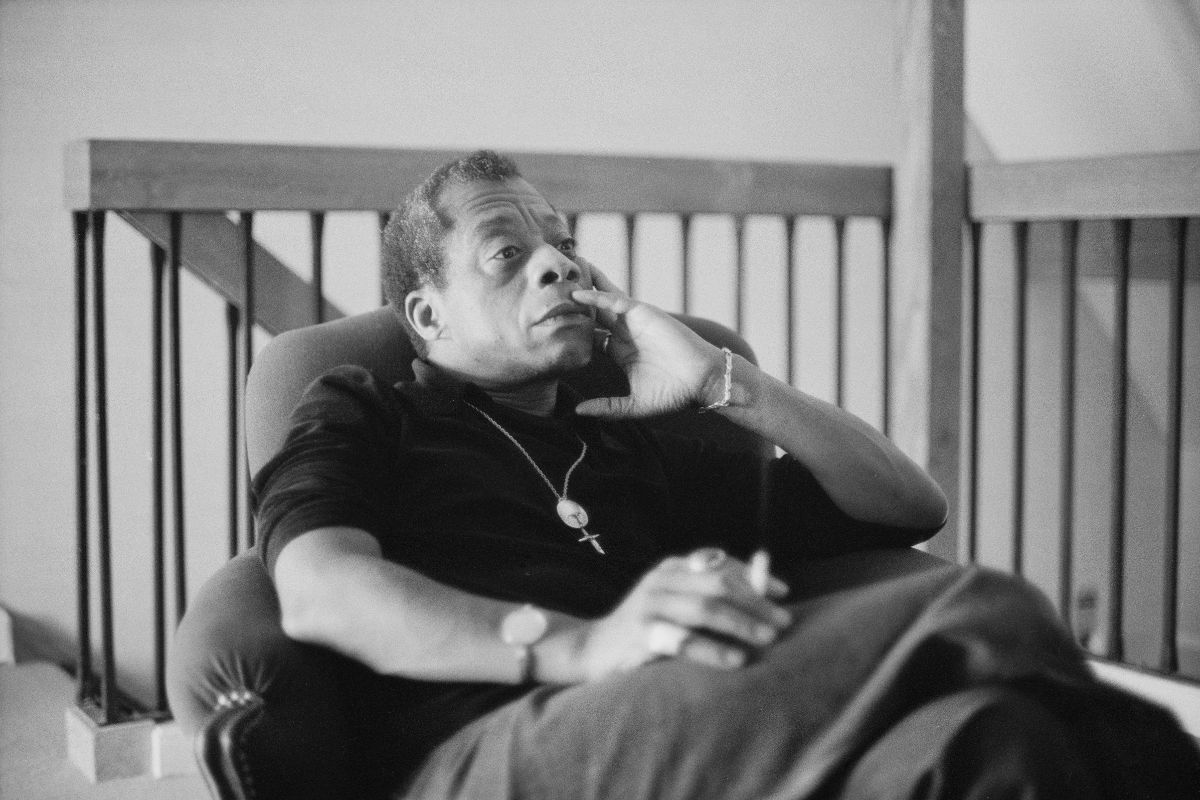James Baldwin’s 1985 Thoughts on Policing Shared Widely Following The Murder of Tyre Nichols

James Baldwin is a man of infinite wisdom. His ability to touch on the pain of living while Black in the U.S. remains nearly unmatched no matter how long ago he said/wrote these words. Because of this, many people are finding a passage from his 1985 essay-turned-book, The Evidence of Things Not Seen, worth sharing following the footage released of Tyre Nichols‘ torture video by the Memphis Police Department.
Black policemen were another matter. We used to say, “If you must call a policeman”— for we hardly ever did—“for God’s sake, try to make sure it’s a White one.” A Black policeman could completely demolish you. He knew far more about you than a White policeman could and you were without defenses before this Black brother in uniform whose entire reason for breathing seemed to be his hope to offer proof that, though he was Black, he was not Black like you.
In sharing this quote, many Black people online (particularly men) have described the punishment of even asking a Black cop to give them some grace because they share something in common. Baldwin wrote this in an essay critical of the response to the slow investigation of The Atlanta Child Murders. As a Black mecca, the city was early to adopt Black members of the criminal justice system after the Civil War. At the time of Baldwin’s essay, this included a Black police commissioner (Lee Brown) and, later, a Black judge (Clarence Booper). However, as the issues with policing being systemic, as we’ve seen, diversity can only go so far.
While this book was about Atlanta a few months before it was published, another high-profile example—of it’s not the people, it’s the system—occurred in Pennsylvania. Under the leadership of a Black mayor, the police bombed a row house, killing 11 people, including five children. The nine-hour fire spread to many houses on the block, resulting in dozens of families losing their homes.
Black cops in media
A 2008 study published by the Law Enforcement Executive Forum found that these attitudes described by Baldwin persist among Black cops. While white cops tended to see themselves as superheroes against “the ghetto,” Black cops spoke about defending Black people from other troublemakers. They tended to acknowledge poverty as a root cause of crime but still saw themselves as arbiters of peace. Many of the Black interviewees in the study echoed the same sentiments Baldwin warned against.
Media portrayals of Black cops (which has become a trope) have tried to tackle this dichotomy. However, most end up advocating for more diversity but maintaining the status quo. There’s the Black man in the buddy-cop genre to the lovable patriarch of a family (Family Matters to The Fresh Prince). The latter was propped up in contrast to the false stereotype of the missing Black father. Even serious movies like The Black Kklansman fall into this both in the narrative and the campaign around it. Many of the most prominent positive depictions of Black men in film/TV have been related to criminal justice in which the Black face serves as a bandage of an “evil” system. This can be local policing or international (a.k.a. imperialism).
Even sanitized, this portrayal has done very little but act as good PR and delude more people of color into joining their local force. This isn’t just a Black cop problem. It extends to other domestic militant organizations like the high percentage of Latine/x people employed in I.C.E. and Border Patrol.
The Black cops before Black cops
Historians have spent a fair amount of time showing how policing in America formed from the slave patrols of pre-Civil War. Over the years, that information has slowly been pulled into public discourse. One under-discussed element of this transformation is that the racialized element of communities that were once considered non-white were adopted into whiteness by capitalizing on this new occupation. More than one community is linked to this, but none as stark as the Irish.
Historian and writer of How the Irish Became White, Noel Ignatiev, has talked extensively about how linked the Irish and Black (freed or enslaved) were before the bar for whiteness was moved to include European immigrants. In a 2005 interview with Z Magazine, Ignatiev explained how connected Irish and Black Americans were regarding labor and living conditions. The communities were so linked that there was an Irish stereotype common in minstrel plays. One of the central ways the Irish were folded into whiteness was through their willingness to become city police and assimilate.
In this way, they not only shed their negative stereotypes (to a degree), but moved from near-capital to the protectors of wealth. By taking on the job as the protectors of capital (property—including humans), Irish people were able to transition into whiteness. Nearly a century later, Black people try to do the same without realizing that whiteness will never include us. The legal framework of race established after Bacon’s Rebellion (itself a land grab fueled by capitalism) solidified this.
(featured image: Sophie Bassouls/Sygma via Getty Images)
—The Mary Sue has a strict comment policy that forbids, but is not limited to, personal insults toward anyone, hate speech, and trolling.—
Have a tip we should know? tips@themarysue.com